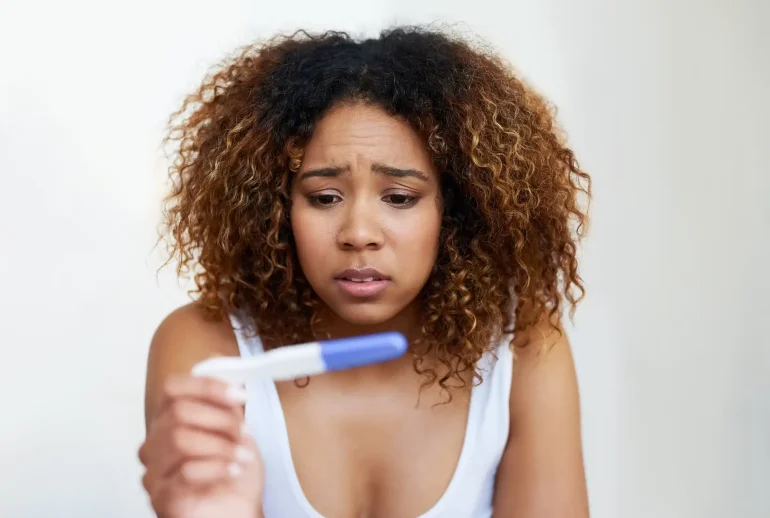Pregnancy Symptoms vs. PMS: How to Tell the Difference
Are you feeling a little off and wondering—am I just getting my period, or could I be pregnant? Many pregnancy symptoms vs PMS signs overlap, making it tricky to distinguish between the two. But there are key differences that can help you better understand what your body might be telling you.
Let’s break down the most common symptoms and how to tell if it’s just premenstrual syndrome (PMS) or early pregnancy.
1. Breast Tenderness
Both: Sore, tender breasts are common in both PMS and early pregnancy.
Difference: In pregnancy, the tenderness may be more intense and your breasts may feel heavier or fuller. It tends to last longer compared to PMS, where it typically goes away once your period starts.
2. Fatigue
Both: Feeling exhausted or low on energy is common in both scenarios.
Difference: Pregnancy fatigue is often more severe and starts earlier—sometimes just a week after conception. If you’re sleeping well but still struggling to stay awake during the day, it might be worth considering pregnancy.
3. Cramping
Both: Mild to moderate abdominal cramping.
Difference: PMS cramps usually occur just before your period and lessen with menstruation. Early pregnancy cramps are often more subtle and may occur around the time of implantation, around 6–12 days after ovulation.
4. Nausea
PMS: Rare.
Pregnancy: Nausea or “morning sickness” can start as early as two weeks after conception. If you feel queasy without a clear cause, it could be an early pregnancy symptom. Planned Parenthood lists nausea as one of the top early signs.
5. Mood Swings
Both: Emotional ups and downs are common in both PMS and pregnancy.
Difference: Pregnancy mood swings may feel more intense or unpredictable due to a rapid hormonal shift. You might also feel a deeper sense of anxiety, irritability, or emotional sensitivity.
6. Food Cravings or Aversions
PMS: More likely to crave sweets or carbs.
Pregnancy: Cravings may be stronger and include unusual combinations. Aversions are more prominent in pregnancy—foods you normally love may suddenly become unappealing or even repulsive.
7. Bloating
Both: Bloating is common due to hormonal changes.
Difference: PMS-related bloating often eases when menstruation begins. In pregnancy, it may persist or worsen due to increased progesterone slowing down digestion.
8. Bleeding
PMS: Normal menstrual bleeding.
Pregnancy: Light spotting may occur as implantation bleeding. This happens when the fertilized egg attaches to the uterus. It’s lighter in flow and color than a period and lasts only a day or two.
Read more about this in our article: 10 Early Signs You Might Be Pregnant.
9. Missed Period
PMS: Your period arrives.
Pregnancy: A missed period is one of the most obvious signs. If your cycle is usually regular and you’re late, it’s a good idea to take a pregnancy test. Unsure when to test? Here’s our guide on when to take a pregnancy test.
How to Know for Sure
Even though these differences can be helpful, the truth is that every body is different. The most reliable way to find out is to take a pregnancy test and follow up with a healthcare provider if necessary.
For more medical insight on how to distinguish these symptoms, visit this article from the Cleveland Clinic.
Final Thoughts
When you’re trying to figure out whether you’re experiencing PMS or early pregnancy, the symptoms can feel frustratingly similar. Paying close attention to the timing, intensity, and combination of symptoms can help guide your next steps.
If you’re in doubt, give yourself peace of mind—take a test and talk to your doctor. You deserve clarity, care, and support on your journey.
